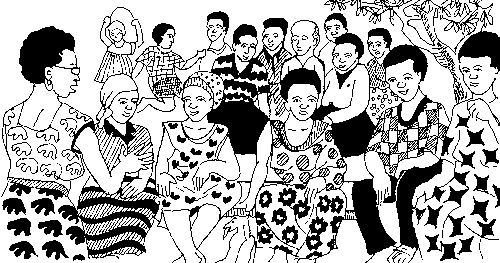Tweet
Translations:
TELLING STORIES
by Phil Bartle, PhD
Training Handout
Not entertainment for its own sake
When you are illustrating principles related to mobilizing, a popular method is to tell a story. You must choose a story that genuinely illustrates the point you want to make (ultimately you are there to mobilize, not to entertain). Story telling, for a purpose, is part of your mobilizers tool kit.
When you want to illustrate, for example, that outside assistance is more helpful when it supports self reliance, and less helpful if it is mere charity, the story of Mohammed and the Rope is appropriate. The beggar was hungry and asked for food but the Prophet gave him some capital and advice that allowed the beggar to provide his own food.
Another example of appropriateness is when you want to illustrate that a community can get more help when it starts helping itself, than if it just demands outside aid. The story is about two boys, one of whom wants to climb a tree. If he starts climbing himself then his friend is more likely to give him a push up. The third story is for mobilizers in training.
Here are three stories you can use to illustrate your principles.
Mohammed and the Rope:
The Holy Prophet Mohammed, peace be upon him, was approached by a hungry man who asked for food. Instead, Mohammed gave the man a piece of rope and some advice: "Go to the woods and collect dry wood lying about. Tie it with this rope. Take it to the town and sell it for firewood. Use the money to buy food." Mohammed had given a gift that helped the man become independent of begging.
What principle is illustrated by this story? "The best gift removes dependency on more gifts."
The Two Boys:
Two boys walked through the woods. The first spotted a nest he wanted to get. He tried to climb the tree but could not reach the first branch. He called to the other to push him, and his friend willingly did. If he had sat under the tree and told his friend to put him on top of the tree, the friend would refuse.
What principle is illustrated by this story? "People are willing to help us when we are helping ourselves"
Both these stories, and many more you will learn in this vocation, can be stretched out, with drama, songs, and skits. See: Wood Carving. They can be very entertaining and unforgettable; if you make a big public event out of telling them. They can be very powerful means of getting a message across.
Acknowledgement: Both these stories originate in Northern Ghana. I am indebted to the Dagomba people, to the Amasachina Youth Association (doing fantastic work in mobilizing self help activities in the Northern Region) and to Bruce and Ann Borquist, Peace Corps, Tamale, Ghana, 1980-1982, for sharing these with me.
Seven Blind Men and the Elephant:
Seven blind men in the village were friends and spent their days discussing things about the world. One day the topic of "elephant" came up. None had ever "seen" and elephant, so they asked to be taken to the elephant to find out what it was. One touched the side, another the tail, another the trunk, another the ears, another the legs, and so on. After their tour they got together to discuss what they had "seen."
"Oh, an elephant is just like a wall," said one (who had touched its side). "No, it is like a rope," said another. "You are both wrong," said the third, "it is like a column holding up a roof." "It is like a python carcass," said the fourth. "It is like a chapati (roti)," said the one who had felt its ears. And on and on they argued.
Some story tellers say they argued so much that they stopped being friends. You can tell the story as you like. Stretch it out and enhance it, making it very entertaining.
The story is used to illustrate many principles. On this web site we can use it to describe the community as the elephant. None of us see it the same way, and it is far more than what any one of us can experience at any one time.
Acknowledgement: I heard this story in India. I do not know if it has a copyright, and apologize to anyone who may hold it. It was told to me as an old parable, as if it belongs to the public domain.
As a mobilizer, you should collect more stories and record them in your journal. Ask other mobilizers, and share at workshops, meetings, seminars, conferences, and other times you come in contact with experienced field workers.
When you read or hear other stories that have different origins, ask yourself if they can be used or modified to illustrate community development principles. Test them. Modify them. Use them. Share with others.
––»«––
Telling Stories:
 |